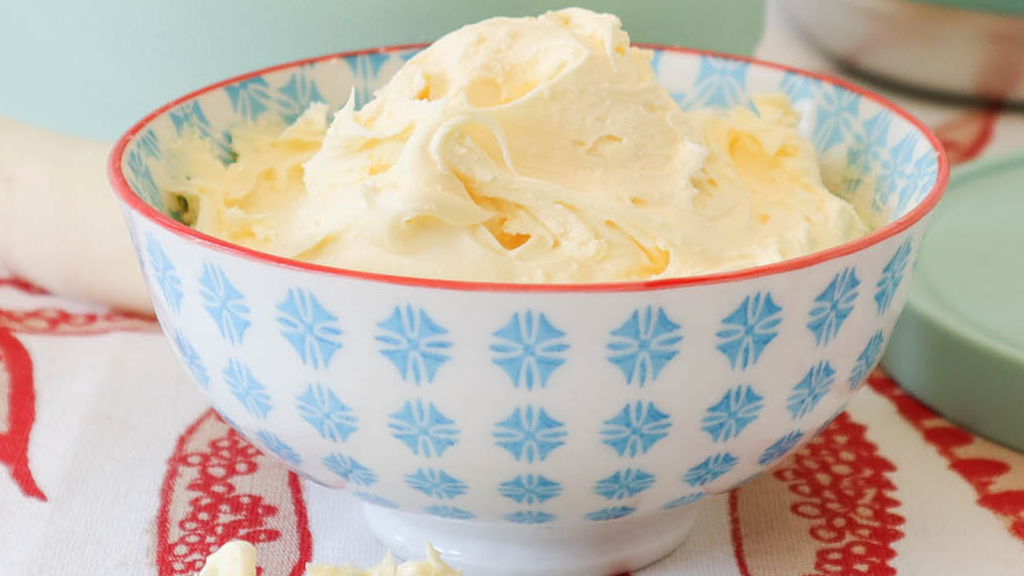Your Cart is Empty
Add description, images, menus and links to your mega menu
A column with no settings can be used as a spacer
Link to your collections, sales and even external links
Add up to five columns
Add description, images, menus and links to your mega menu
A column with no settings can be used as a spacer
Link to your collections, sales and even external links
Add up to five columns

How to make cultured cream (SCD probiotic sour cream)
Barb Hodgens
Barb Hodgens loves to cook with alternative, healthy whole food ingredients, with a focus on gut health. Barb has overcome her own gut health issues through healthy eating. Share your ideas, comments and photos at the end of this post :)

Sour cream, creme fraiche, cultured cream.
Cultured cream is a type of dairy product made from cream that has been fermented with lactic acid bacteria. (We use yogurt starter culture). This process creates a unique tart tangy flavoured cream that is the perfect addition to many dishes, both sweet and savoury.
Cultured sour cream is easy to make at home in a yogurt maker. The preparation is just like homemade 24 hour yogurt with raw milk, only it’s made from the pure cream.
If you are sensitive to the lactose in milk, culturing cream may be an alternative to consider. Why? Real cream is basically just fat, so unlike milk it has only traces of lactose to begin with. Cream is the dairy fat that sits on the top of raw or unhomogenised milk and during fermentation any remaining lactose gets eaten up by the bacteria in the starter culture.
TYPES OF CREAM
Not all cream is created equally. Real pure cream should only have one ingredient and that is cream! A lot of supermarket varieties however, are labeled cream but have fillers and gums added for a better consistency. Additives may interfere with the fermentation process so always read the ingredient list to be sure.
HOW DOES HOMEMADE COMPARE TO STORE BOUGHT SOUR CREAM?
Supermarket sour cream or creme fraiche will not be a true cultured product if it contains additives, and don’t be surprised if ‘live cultures’ aren’t even listed in the ingredients. If cream is fermented for more than 12 hours (and up to 24 hours) it will have more good bacteria than any store bought variety. Why? Read, 'Feel the benefits, make real yogurt at home'.

STARTER CULTURE
Any yogurt starer culture may be used to ferment cream. Follow the instructions on the packet and use the amount specified. We used Yogourmet probiotic starter culture. Depending on your quantity of cream, you should only need a quarter to a half of the sachet of starter. The remaining starter can be stored in the freezer until your next batch.
LONG LIVE THE PROBIOTIC
Cultured cream is full of probiotic goodness, so keep in mind how you use it. It can be added to sauces and baked goods, but once the cultured cream is heated the good bacteria will die. Consider the options: dollop it on top of curries, soup, meat and vegetables at the table rather than heating the cream in the entire dish. If a recipe does require you add cream or sour cream to a sauce (like melted chocolate) make sure the chocolate has cooled to below 43° C before stirring it through.
HOW TO EAT IT?
Cultured cream can be used in savoury or sweet dishes. Just don’t expect it to taste the same as regular cream though. It has a big, tangy, twist that is bold and rich. Consider it matured; like a strong, aged cheese.
CONSISTENCY
Because different brands of cream have different levels of fat, pure cream can be quite variable in consistency. This is the reason common supermarket cream has additives. The consistency of your fermented cream may vary from batch to batch too.High fat cream will be very thick while pouring cream will stay thin.

WHIPPING CULTURED CREAM (optional)
Sometimes you may want to whip the cream to thicken it up. After the cream has fermented it must be chilled completely before you attempt to whip it. Don’t try and whip the cream while it is still warm. Whipping warning: high fat cream can turn to butter in an instant, so be very gentle! Whipping cream can double the volume but this depends on the fat content of the cream. High fat creams won’t increase as much in volume.
SWEETENERS
You can add sweeteners as well. Any sweeteners can be used: Raw honey, rice malt syrup, maple or stevia are all good. Vanilla is of course, essential. Remember, cultured cream is slightly sour so it will not become very sweet.

HOW TO MAKE CULTURED CREAM STEP BY STEP
PREPARATION
It is recommended you sterilise the yogurt making bowl and whisk beforehand. I have always found it is enough to wash in hot soapy water, then rinse in boiling water. The main danger with not sterilising is that other bacteria can overpower your starter culture and affect the quality of your precious starter culture.



How to make cultured cream (SCD probiotic sour cream)
Luvele
Rated 4.0 stars by 4 users
Cultured sour cream is easy to make at home in a yogurt maker. The preparation is just like homemade24 hour yogurt with raw milk, only it’s made from the pure cream.
Ingredients
HOW TO MAKE CULTURED CREAM STEP BY STEP
It is recommended you sterilise the yogurt making bowl and whisk beforehand. I have always found it is enough to wash in hot soapy water, then rinse in boiling water. The main danger with not sterilising is that other bacteria can overpower your starter culture and affect the quality of your precious starter culture.
- Pure cream
- Yogurt starter culture
PREPARATION
Directions
- Scoop the cream from the tub directly into the yoghurt making jar.
Add the starter culture and gently stir it in.
The cream is now ready to begin fermentation. Put the lid firmly on the glass yogurt jar and place into your yogurt maker.
Pour water slowly into the base. The water must not be filled over the ‘tall line’ indicated on the inside wall of the maker.
- Place the cover lid on top.
Set the time & temperature. Use the digital control panel to set the temperature to 38° C (100° F), the time to 12 - 24 hours and then press ‘confirm’ to begin incubation.
When the fermentation is complete. Condensation will have collected under the cover lid. Please take care removing it and allow the water to drip into the water bath, instead of your bench!
Switch the yogurt maker off and remove the jar. Straight from the maker the cream will be warm and depending on the fat content of your cream it may look like it has melted butter on top.
Place the cream in the fridge for at least 6 hours to chill and set.
Recipe Video
PIN THIS RECIPE


How to make cultured cream (SCD probiotic sour cream)

Sour cream, creme fraiche, cultured cream.
Cultured cream is a type of dairy product made from cream that has been fermented with lactic acid bacteria. (We use yogurt starter culture). This process creates a unique tart tangy flavoured cream that is the perfect addition to many dishes, both sweet and savoury.
Cultured sour cream is easy to make at home in a yogurt maker. The preparation is just like homemade 24 hour yogurt with raw milk, only it’s made from the pure cream.
If you are sensitive to the lactose in milk, culturing cream may be an alternative to consider. Why? Real cream is basically just fat, so unlike milk it has only traces of lactose to begin with. Cream is the dairy fat that sits on the top of raw or unhomogenised milk and during fermentation any remaining lactose gets eaten up by the bacteria in the starter culture.
TYPES OF CREAM
Not all cream is created equally. Real pure cream should only have one ingredient and that is cream! A lot of supermarket varieties however, are labeled cream but have fillers and gums added for a better consistency. Additives may interfere with the fermentation process so always read the ingredient list to be sure.
HOW DOES HOMEMADE COMPARE TO STORE BOUGHT SOUR CREAM?
Supermarket sour cream or creme fraiche will not be a true cultured product if it contains additives, and don’t be surprised if ‘live cultures’ aren’t even listed in the ingredients. If cream is fermented for more than 12 hours (and up to 24 hours) it will have more good bacteria than any store bought variety. Why? Read, 'Feel the benefits, make real yogurt at home'.

STARTER CULTURE
Any yogurt starer culture may be used to ferment cream. Follow the instructions on the packet and use the amount specified. We used Yogourmet probiotic starter culture. Depending on your quantity of cream, you should only need a quarter to a half of the sachet of starter. The remaining starter can be stored in the freezer until your next batch.
LONG LIVE THE PROBIOTIC
Cultured cream is full of probiotic goodness, so keep in mind how you use it. It can be added to sauces and baked goods, but once the cultured cream is heated the good bacteria will die. Consider the options: dollop it on top of curries, soup, meat and vegetables at the table rather than heating the cream in the entire dish. If a recipe does require you add cream or sour cream to a sauce (like melted chocolate) make sure the chocolate has cooled to below 43° C before stirring it through.
HOW TO EAT IT?
Cultured cream can be used in savoury or sweet dishes. Just don’t expect it to taste the same as regular cream though. It has a big, tangy, twist that is bold and rich. Consider it matured; like a strong, aged cheese.
CONSISTENCY
Because different brands of cream have different levels of fat, pure cream can be quite variable in consistency. This is the reason common supermarket cream has additives. The consistency of your fermented cream may vary from batch to batch too.High fat cream will be very thick while pouring cream will stay thin.

WHIPPING CULTURED CREAM (optional)
Sometimes you may want to whip the cream to thicken it up. After the cream has fermented it must be chilled completely before you attempt to whip it. Don’t try and whip the cream while it is still warm. Whipping warning: high fat cream can turn to butter in an instant, so be very gentle! Whipping cream can double the volume but this depends on the fat content of the cream. High fat creams won’t increase as much in volume.
SWEETENERS
You can add sweeteners as well. Any sweeteners can be used: Raw honey, rice malt syrup, maple or stevia are all good. Vanilla is of course, essential. Remember, cultured cream is slightly sour so it will not become very sweet.

HOW TO MAKE CULTURED CREAM STEP BY STEP
PREPARATION
It is recommended you sterilise the yogurt making bowl and whisk beforehand. I have always found it is enough to wash in hot soapy water, then rinse in boiling water. The main danger with not sterilising is that other bacteria can overpower your starter culture and affect the quality of your precious starter culture.


:recipekit:
PIN THIS RECIPE


Subscribe
Sign up to get the latest on sales, new releases and more …
